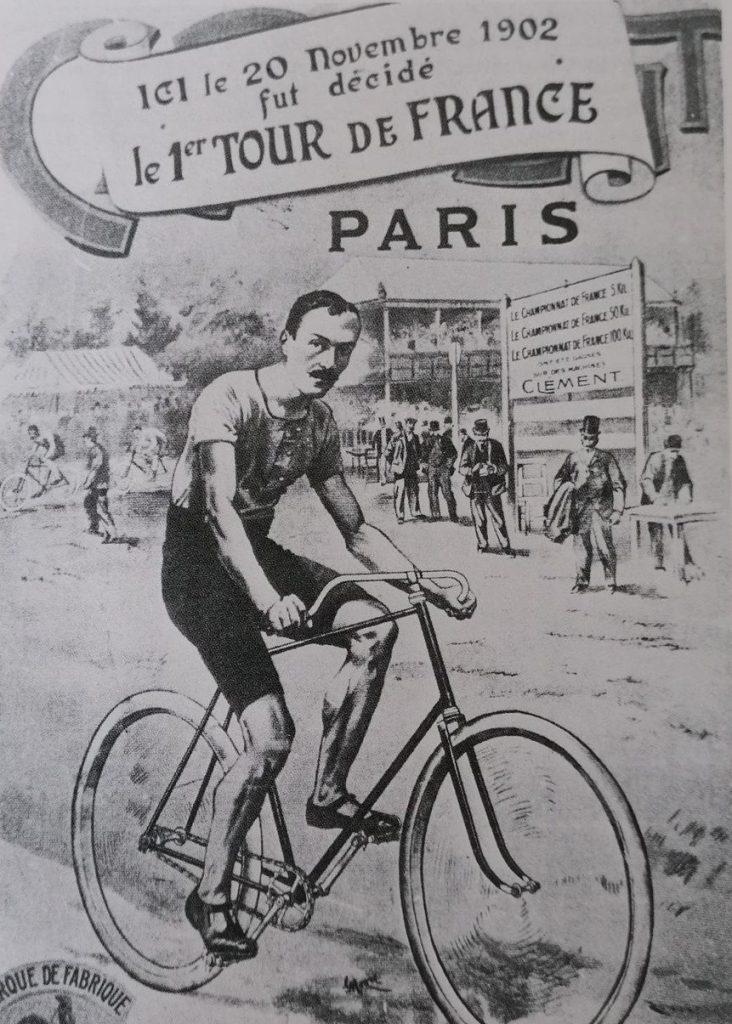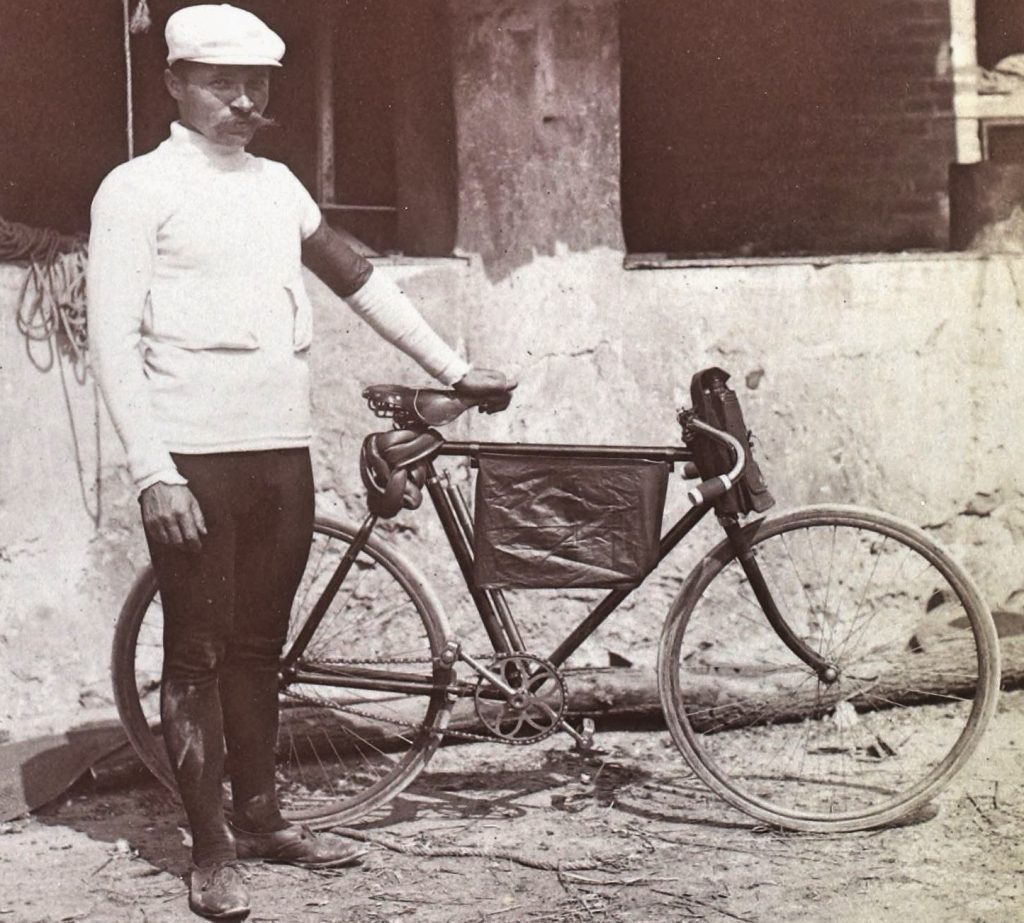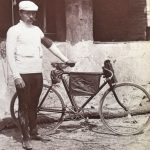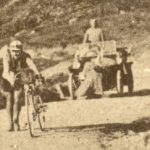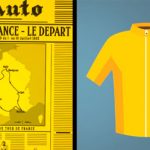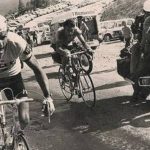Who would have thought that a competitive battle between 2 sports magazines would be the foundation for the biggest cycling event in the world? It was 1902 and Henri Desgrange headed the sports magazine L'auto, which was in danger of disappearing because it had to compete with the much larger Le Vélo, which organized the Bordeaux-Paris and Paris-Brecht competitions.
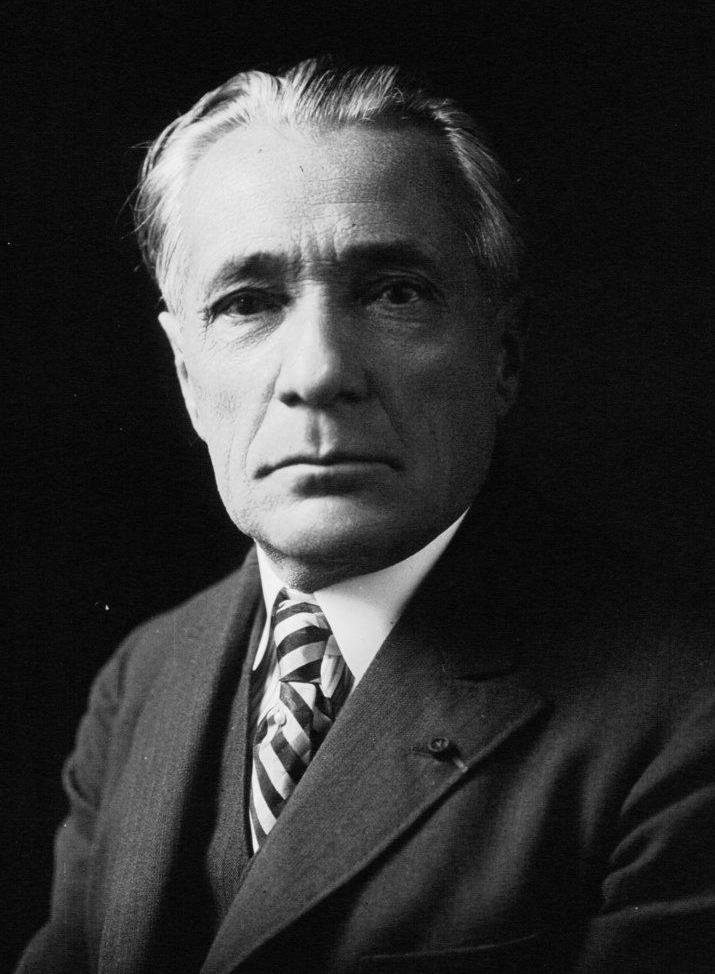
Henri Desgrange -By <a href="/en/”https://fr.wikipedia.org/wiki/Agence_de_presse_Meurisse”/" class="”extiw”" title="”fr:Agence" de presse meurisse”>Agence de presse Meurisse</a> – BNF Gallica, Public Domain, Link
Desgrange was desperate and said that L'auto had to come up with something big if they were to survive. Géo Lefevre was also present and came out with the idea a bit cautiously “why not organize a multi-day course, in the genre of the six days“.
Another colleague made the remark in a somewhat mocking way “if I understand correctly, Mr Lefévre you want the riders to ride the Tour de France" And the idea was born. After some thinking and discussion with the commercial boss of l'auto, the first message was published in the newspaper on January 19, 1903.
The total prize money amounted to 20,000 French francs and in total the participants had to cover 2,428km divided into only 6 stages of around 400km. A real feat. The riders also realized this because there was very little interest. After all, nobody wanted to be away from home for 6 weeks and the costs for the riders were too high. In fact, it was so bad that Desgrange seriously considered canceling the game.
After some adjustments, the official start was given on July 1, 1903. 60 riders who were divided into 2 categories were at the start: those who competed for the final classification and those who competed for a stage win. The strange thing about the latter category is that the riders were allowed to give up during a stage and compete for the victory again the day after.
The reason for this strange decision was that the organization struggled to get to 60 participants and therefore also had many adventurers and amateurs at the start who mainly competed for the prize money. The fact that Desgrange did not follow the first edition himself and left this to his lieutenant Géo Lefèvre, shows that Desgrange had some doubts about the success and the good outcome of the race.
You can imagine that, especially in the category that went for stage victory, all possible means were applied: doping, taking the train, being put off the wind by friends who cycled along, being favored by cars, etc. Anything that could yield a profit was used.
The fact that the first edition of the Tour de France was a real feat is proven by the fact that only 21 of the 60 riders made it to the finish line. The winner was Maurice Garin, an Italian naturalized as a Frenchman of only 1.60m and 63kg who worked as a chimney sweeper. His lead on the 1st pursuer was no less than 2h49 minutes and more than 60 hours on the last.
But Desgrange, Lefèvre and the other employees of the sports magazine L'auto could look back on this first edition with satisfaction. The experiment was successful and the 1904 edition was already being considered in which the negatives would be eliminated.

